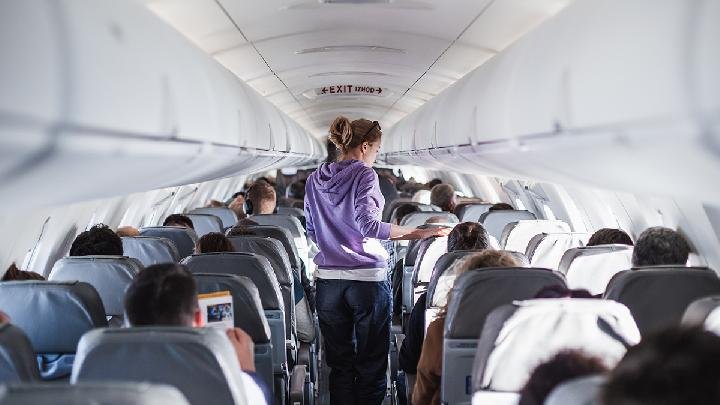Unlocking Affordable Skies: A Guide to Discounted Airline Fares
Flightticketbooking.co.in understands that the dream of travel often comes with the practical consideration of cost. Airfare can represent a significant portion of any travel budget, making the pursuit of discounted airline fares a crucial aspect of trip planning. Fortunately, the world of air travel is dynamic, with a multitude of strategies and resources available to help savvy travelers secure flights at prices that won’t break the bank. This comprehensive guide will delve into the various methods for finding discounted airline fares, empowering you to explore the world without emptying your wallet.
I. The Landscape of Discounted Airfares
The airline industry operates on a complex pricing model, influenced by factors such as:
- Demand: High-demand periods (holidays, peak seasons) generally translate to higher prices.
- Seasonality: Travel during the off-season or shoulder seasons can yield significant savings.
- Fuel Costs: Fluctuations in fuel prices directly impact airfare.
- Competition: Routes with multiple airlines competing often see lower prices.
- Booking Time: The timing of your booking can play a crucial role, with both early booking and last-minute deals offering potential savings.
- Day of the Week: Certain days of the week (typically Tuesdays and Wednesdays) are often cheaper for travel.
Understanding these factors is the first step in navigating the world of discounted airfares.
II. Proven Strategies for Finding Discounted Fares
-
Embrace Flexibility:
- Dates: Be open to adjusting your travel dates by a few days in either direction. Using airline or online travel agency (OTA) calendars to compare prices across different dates can reveal significant savings.
- Destinations: Consider alternative airports or nearby cities. Flying into a smaller, less popular airport can sometimes be substantially cheaper.
- Times: Red-eye flights (late-night or early-morning departures) are often offered at lower prices due to reduced demand.
-
The Early Bird vs. The Last-Minute Lark:
- Early Booking: Generally, booking several weeks or months in advance (especially for popular routes or during peak seasons) can secure better prices. Airlines often release tickets at lower prices initially to stimulate demand.
- Last-Minute Deals: While riskier, waiting until the last minute can sometimes yield significant discounts if airlines have unsold seats. However, this strategy is less reliable and carries the risk of flights being fully booked or prices increasing.
-
Utilize Flight Comparison Websites and OTAs:
- Websites like Google Flights, Kayak, Skyscanner, Expedia, and Priceline aggregate flight data from multiple airlines and OTAs, allowing you to compare prices and find the best deals.
- Set up price alerts on these platforms to receive notifications when prices drop for your desired routes.
- Be aware that some OTAs may add booking fees, so factor those into your calculations.
-
Consider Budget Airlines:
- Budget airlines (also known as low-cost carriers) offer significantly lower base fares by stripping away amenities such as checked baggage, seat selection, and in-flight meals.
- Be mindful of extra fees for these amenities, as they can quickly add up and negate the initial savings.
- Research the airline’s baggage policies and other potential charges before booking.
-
Explore Airline Websites Directly:
- While flight comparison websites are useful, it’s always a good idea to check the airline’s website directly. Sometimes, airlines offer exclusive deals or lower prices that are not available on third-party platforms.
- Sign up for airline email newsletters to receive notifications about promotions and special offers.
-
Take Advantage of Frequent Flyer Programs and Credit Card Rewards:
- Enrolling in airline frequent flyer programs allows you to earn miles for every flight you take, which can be redeemed for free flights or upgrades.
- Consider using a travel rewards credit card that earns points or miles on purchases, which can be redeemed for flights, hotels, or other travel expenses.
- Look for credit cards that offer sign-up bonuses, which can provide a substantial boost to your rewards balance.
-
Be Flexible with Your Route:
- Consider flying with layovers. Non-direct flights are often cheaper than direct flights, especially for long-haul routes.
- Experiment with different connecting cities to see if you can find a lower fare.
-
Clear Your Browser Cookies and Use Incognito Mode:
- Airlines and OTAs sometimes track your browsing history and may increase prices if they detect that you are repeatedly searching for the same flight.
- Clearing your browser cookies or using incognito mode can help prevent this from happening.
-
Look for Package Deals:
- Bundling your flight with hotel accommodations or car rentals can sometimes result in significant savings compared to booking each component separately.
- Websites like Expedia, Priceline, and Travelocity often offer package deals.
-
Consider Group Travel Discounts:
- If you are traveling with a large group, inquire about group travel discounts. Airlines and hotels often offer special rates for groups of 10 or more.
III. Navigating the Fine Print
Before finalizing your booking, carefully review the following:
- Baggage Allowance: Understand the airline’s baggage policy, including weight and size restrictions, and any associated fees for checked baggage.
- Change and Cancellation Policies: Be aware of the airline’s policies regarding changes and cancellations, including any fees or restrictions.
- Seat Selection: Check if seat selection is included in your fare or if it incurs an additional charge.
- Layover Times: Ensure that you have sufficient time to make your connecting flights, especially if you are traveling internationally.
- Travel Insurance: Consider purchasing travel insurance to protect yourself against unforeseen circumstances such as flight delays, cancellations, or medical emergencies.
IV. The Future of Discounted Air Travel
The landscape of discounted air travel is constantly evolving, with new technologies and strategies emerging all the time.
- AI-Powered Booking Tools: Artificial intelligence is being used to develop booking tools that can predict price fluctuations and identify the best deals.
- Dynamic Pricing Algorithms: Airlines are increasingly using dynamic pricing algorithms to adjust fares based on real-time demand and other factors.
- Personalized Travel Recommendations: AI-powered travel platforms are providing personalized recommendations based on individual preferences and travel history.
V. Conclusion
Finding discounted airline fares requires a combination of research, flexibility, and strategic planning. By understanding the factors that influence airfare pricing, utilizing the various resources available, and being willing to adjust your travel plans, you can significantly reduce the cost of your flights and make your travel dreams a reality. Remember to always compare prices, read the fine print, and be prepared to act quickly when you find a great deal. Happy travels! And remember to check flightticketbooking.co.in for potential deals and resources to aid your search.










